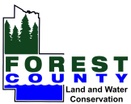Video
Check out this great video
Garlic Mustard
Garlic Mustard Identification and Eradication
Wisconsin Land Trust Days
Sweeping hills meet up with rocky bluffs that burst into a kaleidoscope of color. Wisconsin takes pride in preserving its beauty with the help of land conservancies and events such as Wisconsin Land Trust Days. Through the helpful promotion of Gathering Waters, land trusts throughout the state use these events to show off their prized piece of Wisconsin land, water, wildlife and way of life.
Video
Check out this great video
Grow Beautiful Water Gardens While Protecting Our Lakes
The first appearance of an aquatic invasive species (AIS) is sometimes in our own water garden. Melinda Myers shares her expertise in growing a water garden without introducing or spreading invasive plants. Learn to avoid plants that are invasive in nature, especially those regulated by law in Wisconsin. Choosing plants wisely will protect our waters and wetlands. Disposing of unwanted plants properly is also important.
Inland Lake Shoreline Restoration
The project highlighted in this video was completed by Tip of the Mitt Watershed Council. The video demonstrates bioengineering techniques used to restore a section of shoreline on Intermediate Lake. Bioengineering is also called soft engineering or biotechnical engineering.
Video
Check out this great video
Video
Check out this great video
Protect Our Piers
Spranger is worried the value of his property could drop without the right to put in a pier. He’s a realtor himself, and figures his property value might be cut in half without that ability.
Envirothon
Envirothon teaches Conservation Practices through Competition
The 2020 Wisconsin Envirothon will take place on April 17 at the Wisconsin Lions Camp, Rosholt, WI.
Michigan Shoreland Stewards - Introduction
Healthy, functional lake shorelines do more than create picture-perfect views; they are critical to fish, wildlife and water quality. Fortunately, there are many things lakefront property owners can do to learn more about Michigan’s 11,000 inland lakes and the best ways to protect them
Michigan Shoreland Stewards - Shoreline Zone
The Shoreline Zone is the transitional area between the land and water. It begins at the top of the lake bank, called the shoulder, and extends to where the land meets the water, known as the toe. A healthy Shoreline Zone is critical for the protection of your property and your lake.
Michigan Shoreland Stewards - Buffer Zone
Immediately adjacent to the lake and is located between the Shoreline and the Upland Zones. For the Shoreland Stewards Program the Buffer Zone is measured as 35 feet deep – starting at the top of the lake bank and extending away from the lake. Protecting and planting vegetation within your Buffer Zone protects your property, your lake and surrounding wildlife. Check out this great video
Michigan Shoreland Stewards - Upland Zone
Your Upland Zone is all of your property that sets back from the lake after the first 35 feet. Start at the top of the lake bank and measure 35feet back from the lake. This first 35 feet is your Buffer Zone. Everything else is your Upland Zone. Practicing good shoreland stewardship within the Upland Zone will help protect the health of your lake and your investment
Minimize Yard Cleanup to Protect Pollinators
Check out this great video
Leaf Free Streets
Reducing Urban Phosphorous

